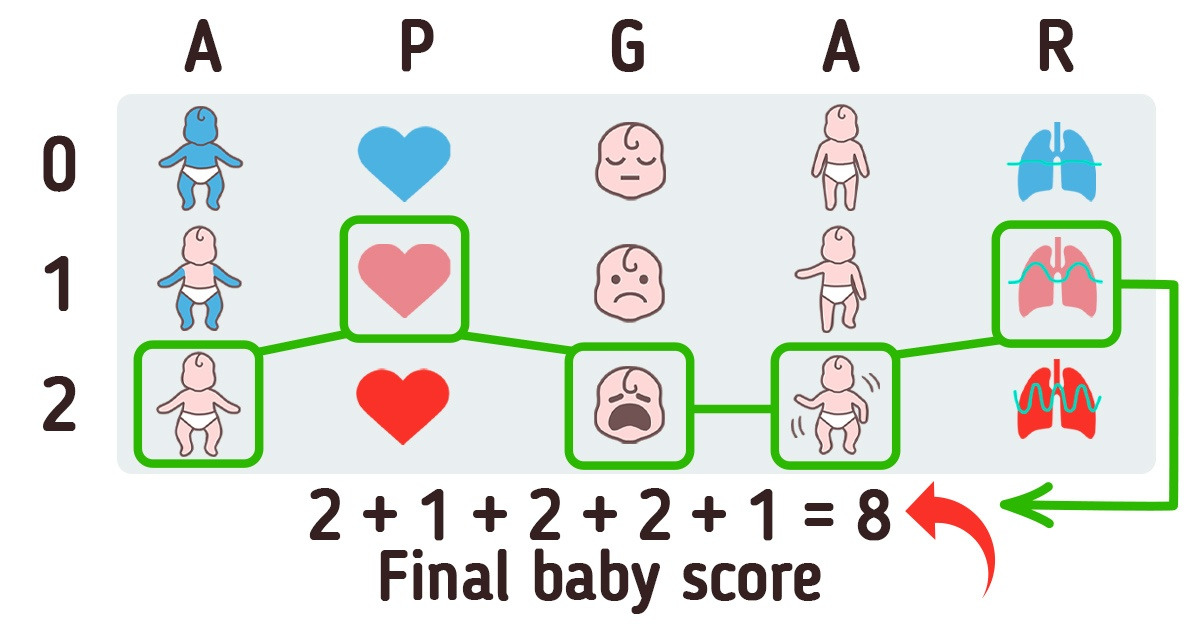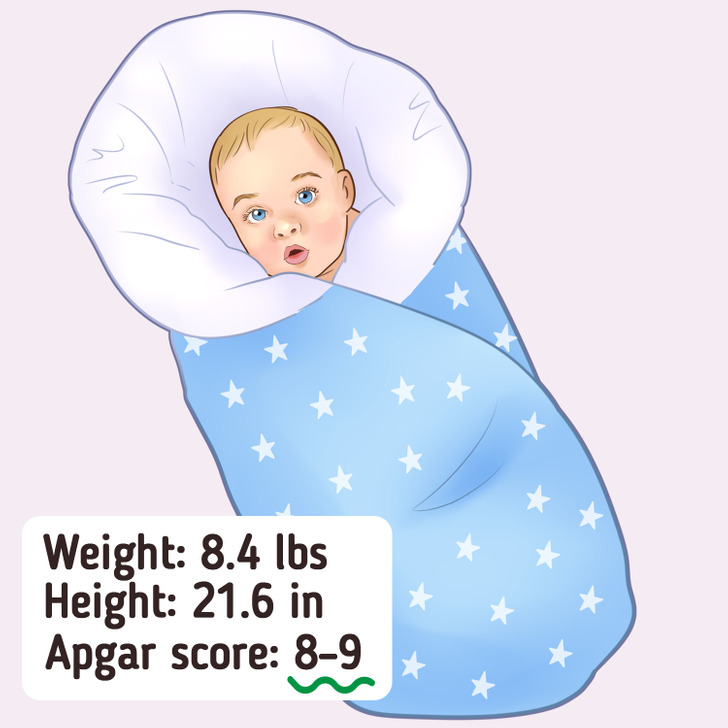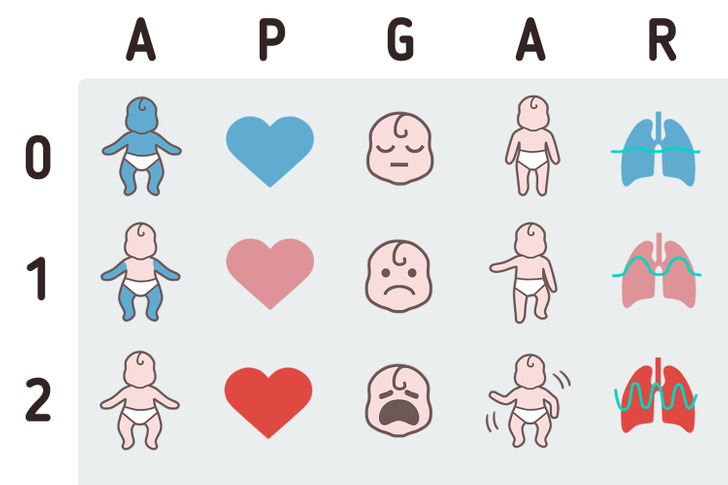What the Apgar Score Is

When a baby is born, doctors need to evaluate the condition of their health to be able to give medical help if it’s needed. In 1952, anesthesiologist Dr. Virginia Apgar suggested her system of a quick health evaluation. So, today, this system is known as the Apgar score.
5-Minute Crafts is going to explain what the Apgar score is and what future parents need to know about it.

Parents of newborns are usually told 3 important parameters about their baby: their weight, their height, and their Apgar score. This number shows the general condition of the child as determined by 5 different factors during the first few minutes of the baby’s life.

1. Skin color (A, or Appearance)
The doctor checks the baby’s skin color and gives:
- 2 points if the color is pink and normal around the entire body
- 1 point if the extremities are blue
- 0 points if the body is generally pale
2. Heart rate (P, or Pulse)
The doctors check to see how fast the heart of the newborn is beating and gives:
- 2 points if the heartbeat is more than 100 beats per minute
- 1 point if the heartbeat is less than 100 beats per minute
- 0 points if there’s no heartbeat
3. Grimace response (G, or Grimace)
The doctor checks the reaction of the newborn to outside irritations and gives:
- 2 points if the baby is screaming loudly, coughing, sneezing, and moving
- 1 point if these reactions are feeble
- 0 points if there’s no reaction
4. Muscle tone (A, or Activity)
The doctor checks to see how the baby controls its body and moves its limbs, and gives:
- 2 points if the baby is moving normally
- 1 point if the baby can move the extremities but the activity is low
- 0 points if there’s no activity
5. Breathing effort (R, or Respiration)
The doctor checks the baby’s breathing and gives:
- 2 points if the baby is breathing normally and screaming loudly
- 1 point if the baby has a weak scream and the breathing is irregular
- 0 points if there’s no breathing
The doctor gives no more than 2 points for each of the indicators. Then, the scores are added up and the result forms a number between 0 and 10.

If the number is less than 3, the condition is critical. If the number is more than 7, it’s normal.
The Apgar score helps doctors to identify babies who need more attention quickly (but it doesn’t mean the baby has a serious health problem). For example, a baby that got 6 points is watched more carefully than a baby that got 8. A score of 3 is considered to be critical and this child will need intensive care.
The condition of a newborn might change, so the evaluation is done right after a baby is born, then 5 minutes later, and one more time later if needed. If the number goes up to between 7 and 10 on the second check, it means there’s nothing to worry about. If the second number gives a 6 or less, the child needs a lot of attention.